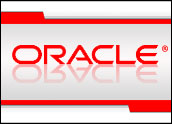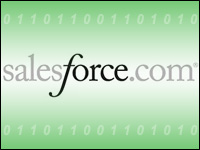
I’ve been at OpenWorld for two days as I file this, but so far I have little CRM-oriented material. CRM really kicks in on Wednesday when the company focuses on CX — or customer experience — the moniker that Oracle has given to much of its CRM focus.
CX is good for what Oracle is about and some of the announcements about private cloud and high capacity storage fit well with the message. For the record, CX was a RightNow term that Oracle adopted when it bought the company last year for a cool 1.5 giga-bucks. Add to this about five other acquisitions including ATG, the e-commerce company, and some Web analytics and all of a sudden Oracle became a potential Cloud and social powerhouse.
I say potential because it all needs to be hooked up into a coherent and consistent whole. That will happen, but it is a rather large undertaking. At any rate, Wednesday — the day you will read this — is when all will be revealed and I am very interested.
Joining The Cloud Crowd
That’s not to say that there isn’t any news to discuss that’s relevant to our corner of the world. Front office has been in upheaval lately with the social and mobile revolution and it’s all driven by the cloud, and here Oracle has stepped up smartly.
In the Sunday keynote, CEO Larry Ellison introduced the Oracle Private Cloud and some very interesting hardware to run it. I had previously said that I expected the company to turn its technology bonanza to the cloud, and much of what I expected did happen — though in ways that were slightly different from my original take. Nonetheless, the announced private cloud is a good idea and will sell well, I think.
Private cloud (PC) is built on Exadata X3 a new storage machine from Sun that sports 26 TB, yup, that’s terabytes, and it’s all silicon memory and very fast. There are spindles in the box, but we aren’t counting them. That’s 26 TB of amazingly fast data, which is also compressed, so the 26 TB is more like 100 TB. It definitely tips the huge-o-meter and the fast-o-meter into the red zone.
PC is also based on Oracle 12c, a new version of the Oracle database built expressly for the cloud (that’s the c). The new DB has some nifty capabilities which enable it to nest databases within databases — can’t find my notes but it has a name. This nesting looks suspiciously like multitenancy to me but one big difference is that if you run only your own data in it, your data is not co-mingling with anyone else’s data. That will appeal to certain industries that are prohibited from co-mingling data — like banks — by regulators. I’ve never figured out why banks can co-mingle money but not data. Both are overlaid with a layer of metadata to keep them separate, but I digress.
Blended Service
So, it seems like Oracle wants to be in the infrastructure business providing computing power for a price. The company offers traditional on-premises, cloud and hybrid (the rose wine of computing?).
In truth, there will be a great deal of hybridizing over the next few years as some enterprises finally take their first tentative steps to the heavens (I mean cloud), and I think this is very good.
The Oracle private cloud and 12c finally provide a solution to the problems that have bedeviled some IT executives. They offer an elegant solution for moving to the cloud even if they are in some ways compromises. More importantly, there is no going back to the data center once you are in the cloud, and over time enterprises will be able to take greater advantage of what the cloud offers.
Saving Energy
Most significant to me is the sustainability angle that all this provides and which everyone is avoiding discussing. It’s like everyone is whistling past the energy graveyard. Truth be told, data centers in the sky suck up giga-watts for running things and cooling them.
They cause big pollution, as I referenced in a previous post. Much of the problem comes from under-utilizing gear that has to run to keep the peas from touching the mashers on the plate — keep everyone’s data from mingling. Translation, there are many separate databases on separate and under-utilized blades and spindles. Oracle PC and 12c start to eliminate the problem by providing ways to increase utilization, reduce the number of devices running and thus cut the energy bill. Not bad.
We’ve reached a tipping point where IT services are becoming more important to our lives for social and mobile computing needs but we’re also approaching limits imposed by power consumption and pollution and that’s where the private cloud can begin showing savings.
All this technology will, I think, help us raise our sights from three or four nines of availability to something more like the seven to nine nines we need for IT services to become a true utility. I’ll have more to post about when I get more information from the CX Summit. For now, it seems to me that after a slow start in cloud computing Oracle is trying to gain prominence and some of the company’s ideas will help get it there.























































